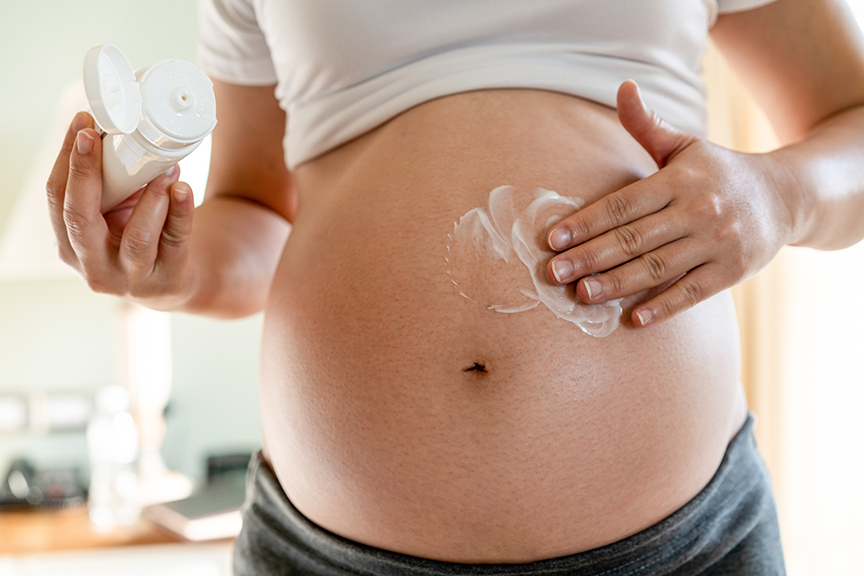You may have done a good job of "child-proofing" your home when your baby started to crawl, but have you re-assessed how safe it is for your toddler?
As natural explorers, toddlers are injury magnets. A recent study found that childhood injuries peak at 15 to 17 months of age. To keep your fearless adventurer safe and sound, use these toddler-proofing tactics.
In the Kitchen
• Drink hot beverages from a travel mug to avoid spills. Use placemats instead of a
tablecloth.
• Push electric coffeepots and tea kettles away from the counter edges, and wrap dangling cords in a twist tie.
• Turn the water heater down to 120 degrees or lower to prevent scalds from faucets.
• Cook on the back burners of the stove, and turn handles so they don’t extend over the edge of the cooktop.
• Store cleaning fluids in their original containers, and lock them in a cabinet out of your child’s sight and reach.
• Don’t leave your toddler alone in a high chair, and always use safety straps.
 In the Bathroom
In the Bathroom
• Keep the toilet lid down when not in use. If necessary, invest in a toilet lock or block the doorway with a safety gate.
• Never leave the room or answer the phone when your child is taking a bath. “You don’t want any distractions during bathtime,” says Meredith K. Appy, president of the Home Safety Council.
• Don’t use a bath seat or bath ring. They’ve been a factor in dozens of drownings. These seats give a false sense of security; accidents happen when they tip over or children slip out of them.
• Keep all medicines and vitamins in their original, child-resistant containers, locked out of sight and reach. Don’t depend on child-resistant caps to do the job; persistent toddlers can open them.
Around the House
• Scan floors for choking hazards — small toys (anything that fits through a toilet paper roll), coins, batteries and popped balloons. Latex balloon pieces are dangerous because they conform to the shape of a child’s airway and are difficult to dislodge.
• Install pressure-mounted gates at the bottom of each staircase and hardware-mounted gates at the top. To reduce the risk of falls, keep the barriers up until your child is at least 2 years old and 36 inches tall.
• Place TVs, VCRs and DVD players on a wall-mounted stand or at the back of a shelf fastened to the wall, with electrical cords out of reach. An increasing number of children are injured by falling televisions.
• Bolt bookcases and chests to the wall with mounting hardware so they won’t tip if your toddler tries to climb on them.
• Use outlet covers on all electrical outlets. Cover sharp edges and corners on furniture and fireplaces with foam or rubber bumpers.
• Choose window treatments that don’t use pull cords; they’re a strangulation hazard. If you must use blinds with cords, cut loops and secure all cords out of reach.
• Keep your child out of your home office by locking the door or closing off the area with safety gates. Its tantalizing contents, from staples to paper clips, are choking hazards.
 In the Yard and Driveway
In the Yard and Driveway
• Lock front and rear entry doors when you’re home so your toddler can’t leave the house and head to the nearest driveway, street, pool or pond. Getting backed over by a car in the driveway is a major cause of injury and death at this age.
• Purchase a tall flag for the back of your child’s tricycle or riding toy to make it visible to motorists. Buy a helmet certified by the Consumer Products Safety Commission.
• Make sure your backyard play set has a soft surface underneath it. It should have a layer of ground cover such as wood chips, mulch or pea gravel at least 12 inches deep and extending from the equipment six feet in all directions.
• Completely enclose pools, ponds or hot tubs with fencing at least four feet high and install a self-closing, self-latching gate with a lock.
• Keep your tot indoors whenever you use power tools and garden equipment, such as the lawn mower.
• Store matches, antifreeze, charcoal lighter fluid, windshield wiper fluid, gasoline and oil in their original containers out of your child’s sight and reach in a locked cabinet.
• Empty all five-gallon buckets; they’re a formidable drowning hazard. If you’re using a cleaning solution, don’t let it sit around and store the bucket upside down so it can’t collect water.
Sandra Gordon is a freelance writer.






